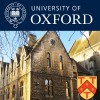Shimaga Reforms: Mapping Idea(s) of Obscenity in Colonial Maharashtra
Shimaga (Holi) was not celebrated as the festival of colours in the nineteenth century Maharashtra. It was rather a festival associated with grotesque, obscene and riotous behaviour. The celebrations included bawling, beating mouth, obscene and abusive speech, erotic songs and dances, applying mud, dung and dirt to bodies, smearing faces with gulal ‘like a corpse’, strange costume and street processions mimicking funeral/ wedding processions. However, from the mid-nineteenth century onwards, there were many attempts and appeals by the Marathi intelligentsia to ‘reform’ the festival. The shastras were cited to assert that obscenities were not quintessential in the celebrations; and sports events were organized to divert people from indulging in obscenities even by bahujan associations like Depressed Classes Mission Society of India.
Can these reforms be read as diffusion of Victorian morality in India through the colonial laws and the Christian missionary critique? Were they an instance of suppression of cultural expressions of the lower order by the English-educated indigenous gentry (Banerjee, 1987: 1197)? The references in the literary journals suggest that the advocates of Shimaga reforms were aware of carnival-like festivals in Jewish, Persian and European traditions. They invoked Sanskrit texts and traditions, at times, to criticize obscenities in Shimaga, but also knew that the conceptions of obscenity and eros in these texts were different from the Victorian ideas. Thus, the trajectory of idea of obscenity in colonial Maharashtra may not be linear (Victorian society to Indian elite to Indian masses).
The existing scholarship has either approached the issue of obscenity from a legal perspective (censorship) or discussed it in the context of gender, sexuality and community (Gupta, 2001) or nudity (Guha-Thakurta, 2004) in art and literature. In case of Shimaga reforms, unruliness and grotesque realism also constitute obscene.
Thus, by examining Shimaga reforms as a case in point, this paper seeks to map the circulation of the idea(s) of obscenity in colonial Maharashtra.




